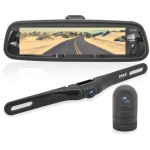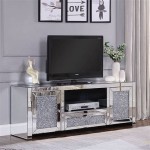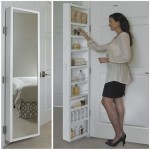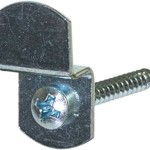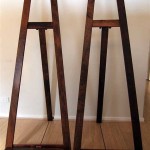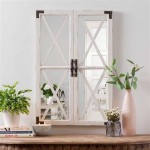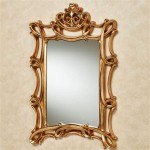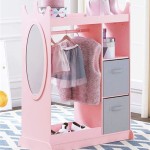Essential Aspects of Tilt Mirror Hardware
Tilt mirror hardware plays a crucial role in various optical systems, including laser scanning, beam steering, and image stabilization. Selecting the right tilt mirror hardware is essential to optimize performance and achieve desired results. This article explores the key aspects of tilt mirror hardware to help you make informed decisions.
Material and Construction
The material used for the mirror substrate and mount affects the performance and durability of the tilt mirror hardware. Common materials include aluminum, steel, and nickel-plated brass. Aluminum offers a lightweight and high-stability option, while steel provides enhanced rigidity and strength. Nickel-plated brass ensures corrosion resistance and durability in harsh environments.
Angle Resolution and Accuracy
The angle resolution of the tilt mirror hardware determines the minimum angle increment that can be achieved. This is important for applications requiring precise control over the tilt angle. Similarly, angle accuracy refers to the deviation between the actual tilt angle and the commanded angle. High-quality tilt mirrors offer sub-arcsecond resolution and accuracy, ensuring accurate and repeatable beam steering.
Tilt Range and Speed
The tilt range of the hardware defines the maximum angle that the mirror can be tilted. This aspect is critical for beam steering applications and depends on the specific requirements of the system. The tilt speed, measured in degrees per second, influences the dynamic response of the hardware. Fast tilt speeds are essential for applications requiring rapid beam steering or image stabilization.
Actuator Type
Tilt mirrors are typically actuated using piezoelectric transducers (PZTs) or galvanometers. PZTs provide high precision and accuracy, while galvanometers offer higher speeds. The choice of actuator depends on the desired performance characteristics and application requirements.
Environmental Considerations
The operating environment can impact the performance of tilt mirror hardware. Factors such as temperature, humidity, and vibration must be considered. Choose tilt mirrors with appropriate protection or ruggedization features to ensure reliable operation under various conditions.
Additional Features
Some tilt mirror hardware offers additional features to enhance functionality. These may include built-in position sensors for closed-loop control, encoder feedback for precise angle measurement, and vacuum compatibility for use in high-vacuum environments. Consider these additional features to meet specific system requirements.
By understanding the essential aspects of tilt mirror hardware, you can make well-informed decisions that meet the demands of your application. Careful selection of the right hardware will optimize performance, enhance precision, and ensure reliable operation in a variety of optical systems.

Square Black Pivot Mirror Hardware Tilting Anchors Hamilton Hills

Adjustable Tilt Stainless Steel Channel Framed Mirror Hi Tech Glazing Supplies

Square Black Pivot Mirror Hardware Tilting Anchors Hamilton Hills

Round Polished Silver Pivot Mirror Clips Hardware Tilting Ancho Hamilton Hills

Swivel Mirror Wedge Mounting Brackets Polished Brass Nickel

Pivot Mirror Hinges Paxton Hardware

Round Polished Silver Pivot Mirror Clips Hardware Tilting Ancho Hamilton Hills

Hawthorn Hill Deco Square Tilting Bathroom Mirror With Metal Frame 508h X 508w 618w Incl Brackets The English Tapware Company

Black Pivot Mirror Hardware Tilting Anchors For Flexible Glass Roomdividersnow

Asi 0600t Adjustable Tilt Mirror Left And Right Brackets 0600 T

